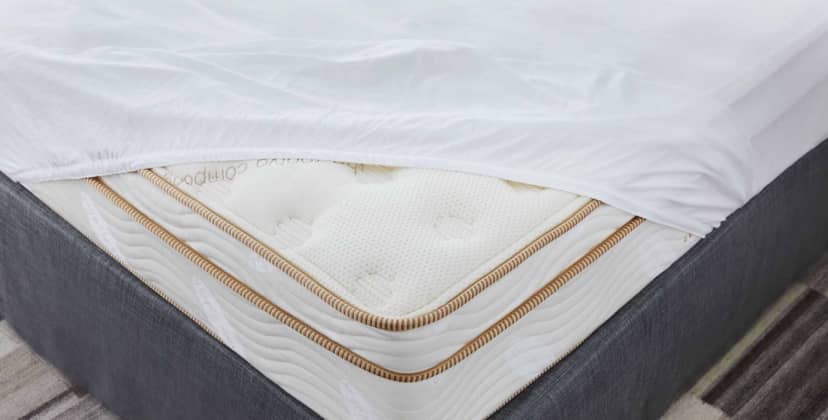When you buy through our links, we may earn a commission. Products or services may be offered by an affiliated entity. Learn more.
Best Mattress Protector for Bedwetting
Bedwetting is quite common. Some studies indicate it may occur in up to 20% of children under 5 and 10% of children under 10. Additionally, adults with urinary incontinence may also experience bedwetting. As a medical condition, bedwetting is also known as nocturnal enuresis.
While bedwetting is common, it is often stigmatized. It can affect a child’s self-esteem and impact family relationships. Children typically grow out of bedwetting as they gain more control over their bodies, but in the meantime, parents may want to simplify their lives and protect the child’s mattress by using a waterproof mattress protector.
Moisture can permanently damage a mattress, leading to lingering stains and smells. Some warranty policies may even be voided if evidence of bedwetting is present. A mattress protector for bedwetting is an easy and typically affordable solution that makes cleanup easier without significantly altering the feel of the bed.
Below you’ll find our best mattress protector for bedwetting picks for mattress protectors for bedwetting. This guide will also take a closer look at factors that can impact the performance, comfort, and convenience of a mattress protector for bedwetting.
The Best Mattress Protectors for Bedwetting
-
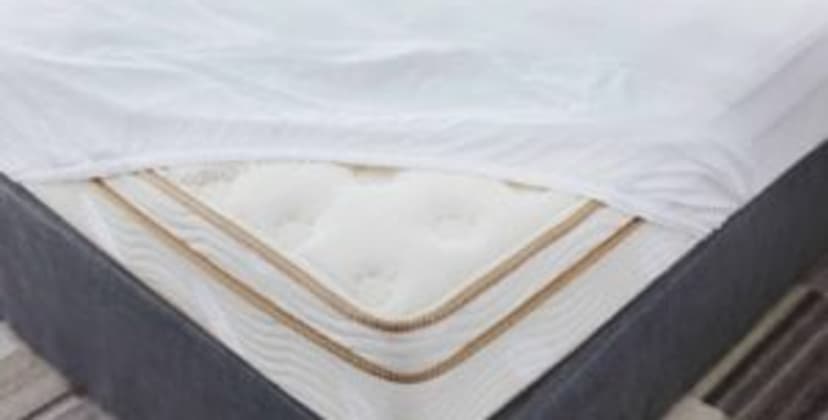
Best Overall
Saatva Waterproof Mattress Protector
Shop Now
-
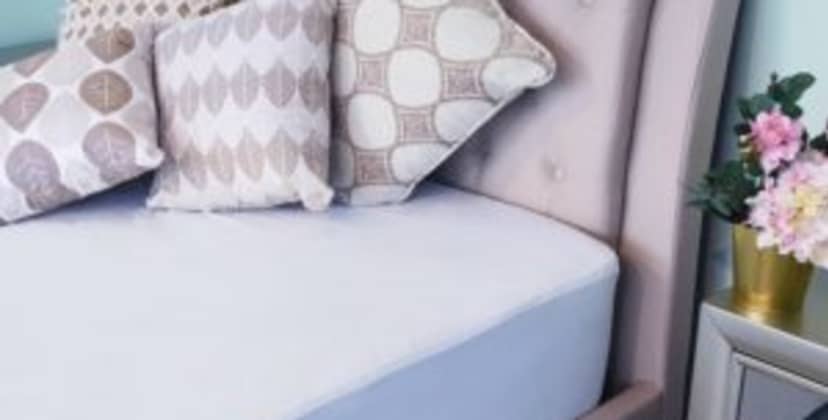
Best Value
Sweet Zzz Cooling Mattress Protector
Shop Now
-
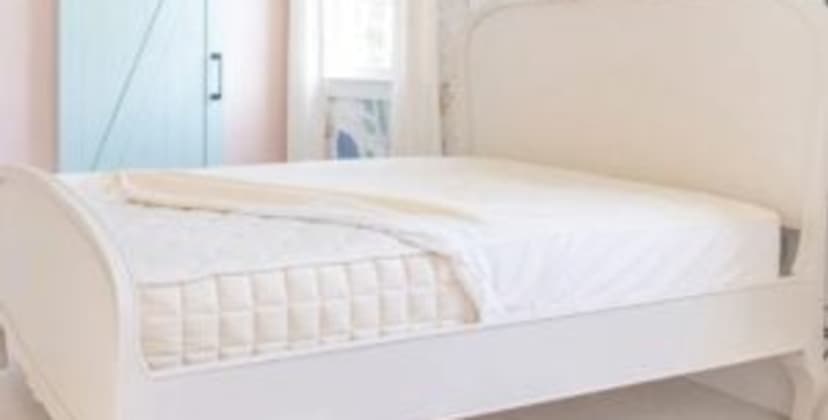
Best for Kids
Naturepedic Organic Waterproof Protector Pad (Kids Collection)
Shop Now
-
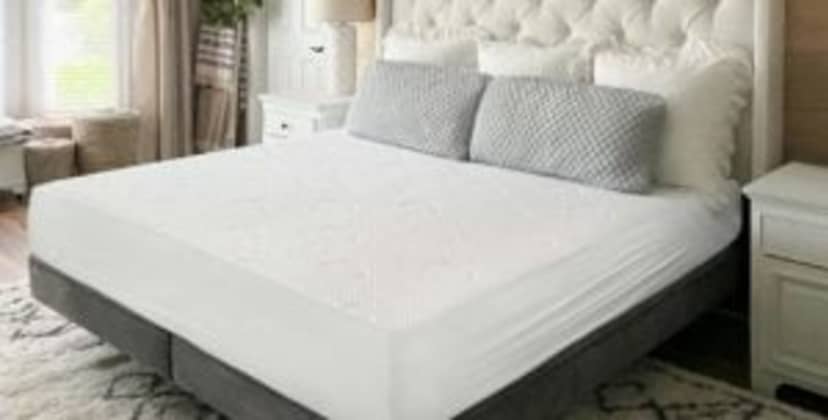
Most Comfortable
Puffy Mattress Protector
Shop Now
-
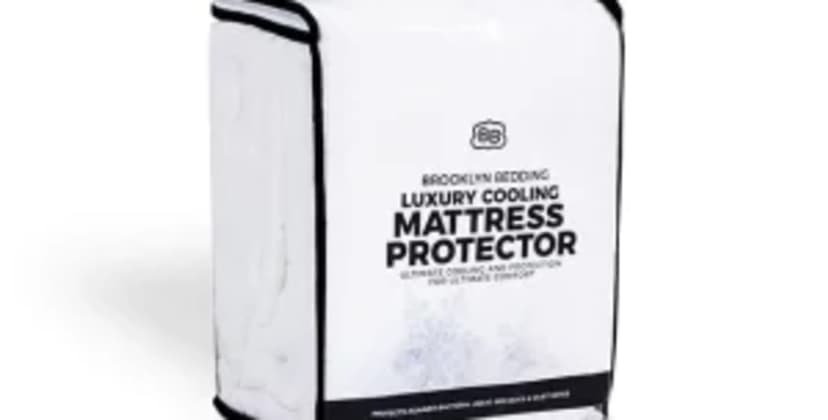
Softest
Brooklyn Bedding Cooling Mattress Protector
Shop Now
-
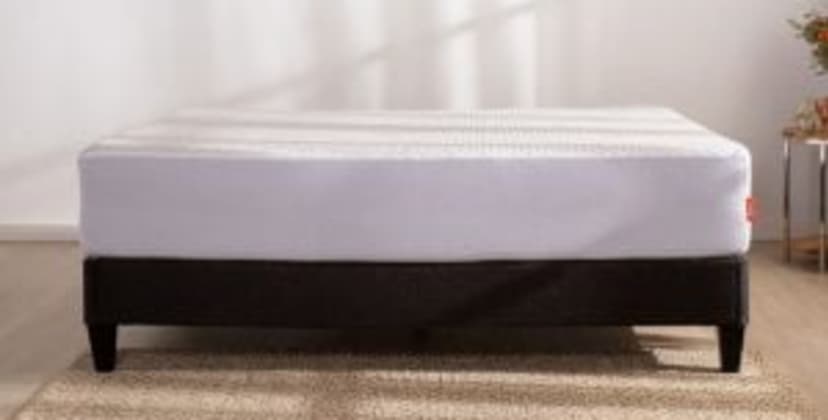
Best Machine-Washable
Layla Full Encasement Mattress Protector
Shop Now
-
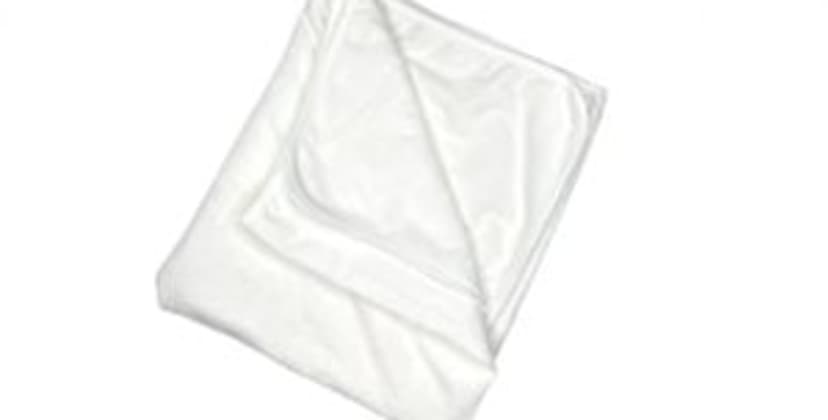
Best for Potty Training
Peejamas Peel-Away Pad
Shop Now
In-Depth Reviews
-
Who it’s best for
-
Those who normally find mattress protectors too hot
-
People who own mattresses up to 16 inches thick
-
Consumers who would rather purchase Fair Trade products
-
-
Highlights
-
Moisture-wicking organic cotton won't trap too much body heat
-
Moisture barrier is ventilated for added breathability
-
360-degree elastic lining prevents shifting and keeps protector in place
-
Price
$145
Material
Organic cotton with polyurethane moisture barrier
The Saatva Waterproof Mattress Protector is composed of organic cotton, making it softer and more breathable than a lot of competing protectors. The polyurethane moisture barrier is also ventilated with small holes to promote extra airflow. As a result, this protector is a great option for people who normally sleep warm on this type of bedding.
A thick, silicone elastic band wraps the entire perimeter to keep the layer in place throughout the night. The pocket depth is 16 inches, so the protector will be compatible with the majority of mattresses sold today.
The protector is completely machine washable and holds up well over time, even if you need to frequently launder it. Six sizes ranging from twin and twin XL to king and California king are available. Saatva produces this protector in a factory that has earned Fair Trade certification, giving shoppers peace of mind about the company’s working conditions.
Ground shipping is free of charge for all customers in the contiguous U.S. Saatva also offers a 45-night sleep trial that includes free return shipping if you decide not to keep the protector.
Best Value
Sweet Zzz Cooling Mattress Protector
Use code SF10 for an additional 10% off sitewide
Shop Now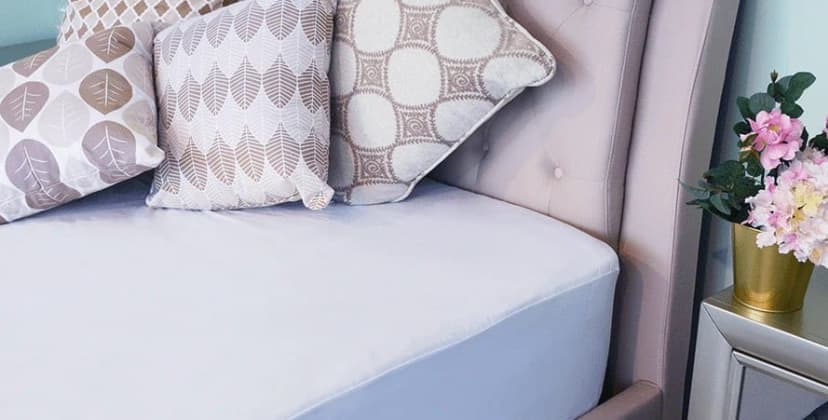
-
Who it’s best for
-
People who tend to sleep hot with mattress protectors
-
Those who sleep on mattresses up to 14 inches thick
-
Value seekers
-
-
Highlights
-
Composed of breathable Tencel fabric derived from eucalyptus
-
Silky-soft feel with waterproof protection
-
50-night trial and 10-year warranty against structural defects
-
Price
$59
Material
Tencel lyocell and waterproof polyurethane membrane
The Sweet Zzz Cooling Mattress Protector is composed of Tencel, a naturally breathable fabric derived from bamboo. Tencel protectors can be fairly pricey, but this model’s sticker price is quite approachable by comparison. A luxuriously soft feel and 100% waterproof construction further elevate this protector above competing models within the same price range.
Tencel also has moisture-wicking properties to keep sleepers dry and comfortable, even if they reside in hot or humid locales. The smooth fabric is also a good option for sleepers with acne and other conditions that cause sensitive skin. A pocket depth of 14 inches makes the protector compatible with most mattresses sold today. When the protector needs to be cleaned, Sweet Zzz recommends machine-washing on a cold, gentle cycle and tumble-drying on low heat. Washing with bleach or ironing the protector will void the warranty.
Sweet Zzz offers free ground delivery within the contiguous U.S. to save you even more on your purchase. The protector comes with a 50-night sleep trial, though returns will not be accepted if you or anyone else in your household uses it more than once. If you decide to keep the protector, you’ll receive a 10-year manufacturer’s warranty that covers certain structural defects.
Best for Kids
Naturepedic Organic Waterproof Protector Pad (Kids Collection)
15% off with code SF15
See Discount Price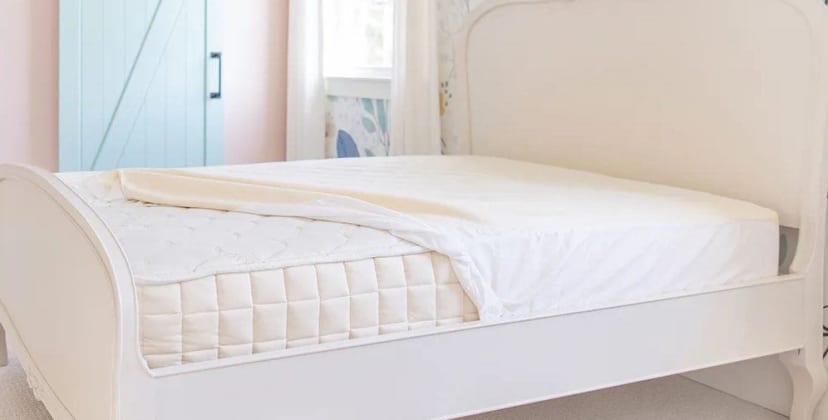
-
Who it’s best for
-
Kids who are potty-training or wet the bed at night
-
Shoppers who prioritize organically sourced bedding
-
People who prefer machine-washable bedding
-
-
Highlights
-
Certified organic by the Global Organic Textile Standard (GOTS)
-
Cotton jersey promotes softness
-
100% waterproof
-
Price
$159
Most Comfortable
Puffy Mattress Protector
Use this link for the most current Puffy discounts
Shop Now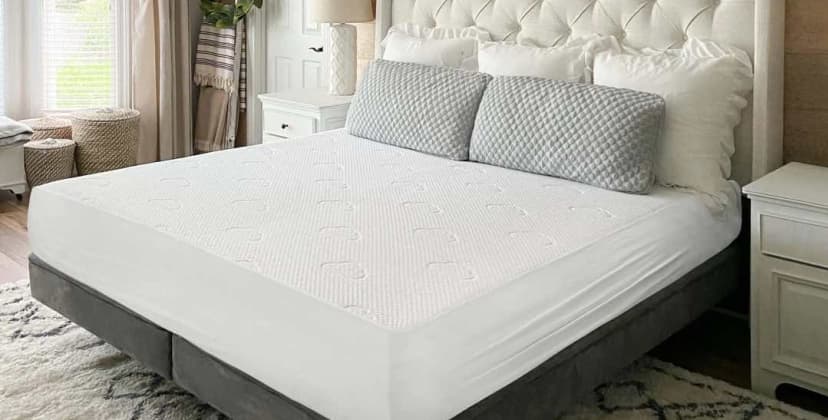
-
Who it’s best for
-
Hot sleepers
-
Anyone who owns a mattress up to 15 inches thick
-
Shoppers looking for a protector with a lengthy trial period
-
-
Highlights
-
Cooling shell fabric dissipates heat while providing waterproof protection
-
Elastic pockets offer a 15-inch pocket depth
-
Fully machine-washable for quick and easy care
-
Price
$128
Material
Rayon derived from bamboo
Most waterproof protectors are machine-washable by design, allowing you to keep them as sanitary as possible. The Puffy Mattress Protector can be washed and dried in any machine, making it easy to keep clean after each bedwetting episode. Even if accidents don’t occur, you should launder the protector every couple of months to keep the fabric hygienic.
The protector is fully waterproof, but relatively silent. A shell made of cooling fabric also helps to dissipate heat and prevent excessive warmth – a common issue with waterproof protectors. The elastic pockets are thick for extra security, and a pocket depth of 15 inches makes the protector compatible with most mattresses made today. You can choose from six sizes that correspond with standard mattress dimensions.
Puffy’s 101-night trial period is exceptionally long compared to other brands that sell mattress protectors. You’ll also receive a lifetime warranty should you decide to keep the protector. Shipping is free for customers in all 50 states.
Softest
Brooklyn Bedding Cooling Mattress Protector
Use this link for the most current Brooklyn Bedding discounts
Shop Now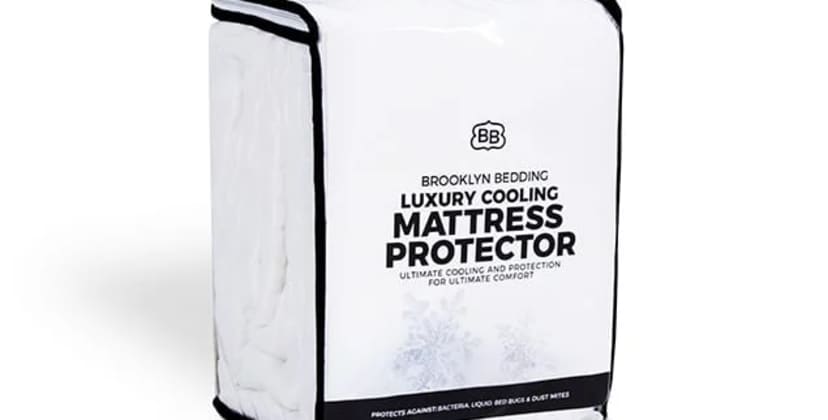
-
Who it’s best for
-
Hot sleepers
-
People who own mattresses up to 14 inches thick
-
Shoppers looking for a protector with a decent warranty
-
-
Highlights
-
Phase-change material delivers consistent cooling
-
Cotton terry adds a silky-soft surface feel
-
Backed by 3-year warranty
-
Price
$129
Material
Polyester infused with TitanCool phase change material
A common complaint about mattress protectors is that they offer limited airflow due to their moisture barriers and sleep uncomfortably hot as a result. The Cooling Mattress Protector from Brooklyn Bedding lives up to its name thanks to an infusion of phase-change material, which is engineered to draw heat away from your body and maintain a comfortable surface temperature. The protector feels cool to the touch and is a good option for people who run hot in bed or reside in warmer climates.
The outer material consists of cotton terry with a very soft hand-feel, while a thin polyurethane layer acts as an effective moisture barrier without hindering airflow. The protector is also designed to be hypoallergenic and stave off dust mites, as well as bacteria, bed bugs, and other contaminants. A pocket depth of 14 inches makes it compatible with most of today’s mattresses.
For easy and convenient care, the protector can be washed and dried in your machines at home. Brooklyn Bedding offers all six standard mattress sizes.
Brooklyn Bedding offers free ground shipping anywhere in the lower 48 states. Your purchase includes a sleep trial that allows you to test out the protector for up to 30 days and return it if you aren’t satisfied. Those who keep their protector will receive a 3-year warranty.
Best Machine-Washable
Layla Full Encasement Mattress Protector
Use this link for the most current Layla discounts
Shop Now
-
Who it’s best for
-
Young children who frequently wet the bed
-
People seeking a protector that doesn't crinkle
-
Sleepers who are worried about bed bugs
-
-
Highlights
-
Offers full waterproof protection
-
Designed to fully encase your mattress
-
Polyester fabric is soft and silent
-
Price
$134
Material
Polyester and waterproof polyurethane membrane
If you’re looking for peace of mind when it comes to protecting your mattress from stains, the Layla Full Encasement Mattress Protector is designed to provide optimal protection against spills and messes.
The protector is made with polyester on top and thermoplastic polyurethane on the back side of the material. The polyester surface confers softness against the skin, while the polyurethane creates a waterproof barrier to keep moisture and dirt from reaching your mattress. Unlike elasticated protectors that fit over the surface of the bed, this model encases your entire mattress to maximize protection. The case has a zipper enclosure to keep the casing in place.
The protector is available in six different sizes, all measuring 14 inches deep. This will fit most standard mattresses, but you should pick a protector with greater pocket depth if you own a high-profile bed.
Customers have 30 nights to try out the protector, during which they may return it for a full refund. The protector is also backed by a 1-year warranty to protect against defects. Shipping is free to the contiguous U.S.
Best for Potty Training
Peejamas Peel-Away Pad
Use this link for the most current Peejamas discounts
Shop Now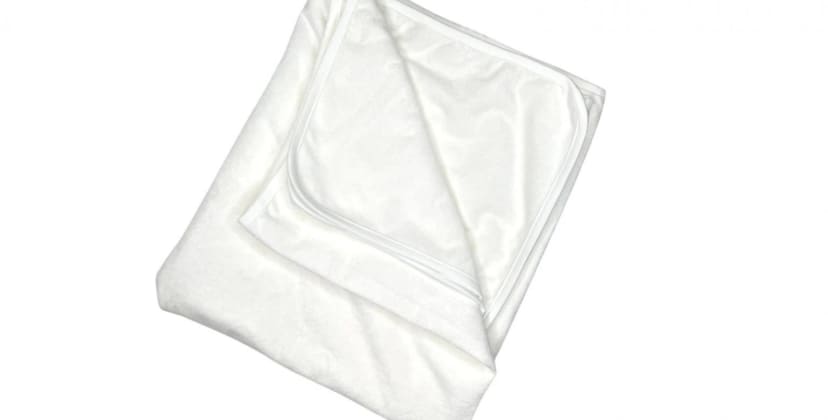
-
Who it’s best for
-
Kids going through potty training
-
Any child using a mattress up to 14 inches thick
-
Parent who’d like to save money on a waterproof protector
-
-
Highlights
-
High absorbency level can protect a mattress during heavy bedwetting episodes
-
Fully machine washable for easy care and cleaning
-
60-day return period
-
Price
$45
Many protectors effectively safeguard your mattress against a wide range of contaminants, including urine and other fluids that can cause liquid damage. But the Peejamas Peel-Away Pad is specifically designed for children who are going through potty training or frequently wet the bed. The inner lining contains more than 50 ounces of absorbent fiber fill, ensuring the mattress won’t be harmed even when exposed to copious amounts of liquid. The one-size-fits-all construction is intended for twin-size mattresses.
Rather than covering the entire sleep surface, the pad is designed to lie beneath the midsection. Elasticated corners allow you to stretch the pad around the mattress much like a fitted sheet, and you can tuck the cotton wings at each end beneath both sides to prevent shifting or clumping during the night. The pocket depth is 14 inches, so the pad should be compatible with the vast majority of children’s mattresses and many adult-friendly models.
The pad is composed of a bamboo-derived fabric shell with a polyurethane waterproof barrier, making it fairly breathable compared to other protectors. When it needs to be cleaned, simply untuck the wings on each side. For optimal performance, Peejamas recommends machine-washing the pad one time before first use. This will loosen the fill to increase absorbency. For regular cleaning, wash on a gentle cycle and tumble dry low. Turning the bottoms inside out should decrease the drying time.
The Peel-Away Pad is quite affordable and suited to parents shopping on a budget. Peejamas also allows returns of unused and unwashed pads within 60 days of the original purchase.
How to Choose a Mattress Protector for Bedwetting
The right mattress protector for bedwetting can prevent damage and extend the bed’s lifespan. However, mattress protectors vary in their styles, materials, and performance, so selecting the best mattress protector for your family’s needs requires some consideration and research. Below, we’ll detail the most critical factors to take into account when making your choice.
Style Options
Mattress protectors come in different styles. Main differences include protector thickness and how the protector fits. Each style has potential pros and cons that may make it better or less suited to some customers. The best choice for you will depend on your needs and preferences.
Fitted Protector: A fitted mattress protector covers the bed’s corners like a fitted sheet, with elastic around the perimeter to secure it in place. These protectors typically fit a wide range of mattress profiles, and are easy to remove for cleaning. However, fitted protectors traditionally only protect the surface of the mattress, leaving the other five sides exposed. Another downside is lack of cushioning for most. They may not be ideal if you’re hoping to adjust the feel of a mattress.
Fitted Pad: A fitted pad mattress protector secures to the bed with an elastic perimeter, making it easy to put on and remove for cleaning. The main difference between a fitted mattress protector and a fitted pad is that the pad, by definition, adds cushioning to adjust the feel of a sleep surface. Like fitted protectors, however, a fitted pad will typically only protect the top of the bed.
Mattress Encasement: A mattress encasement covers all size sides of the bed for 360-degree protection. To apply the encasement, prop up the mattress, lower the encasement over it, and zip it closed. While encasements generally offer unmatched protection, the process involved in getting them on and off may deter some customers. They can also be expensive compared to protectors and pads.
Pad: A pad protector rests on the surface of the mattress without elastic corners to keep it in place. Instead, it typically relies on the fitted sheet to anchor it. This can be one of the most convenient options when it comes to cleanup and making the bed, but it may shift during the night and leave areas of the surface exposed.
Materials
Several different materials may be used to construct a mattress protector. Many use a two-layer design with a soft, absorbent top layer and a waterproof bottom layer to balance comfort and protection.
Waterproof Backing Materials
The waterproof backing is an important factor for parents to consider when selecting a mattress protector for a bedwetting child. While parents want to protect the mattress, they should also ensure the protector is safe for their children.
Vinyl: While some manufacturers use vinyl backing, many now avoid it due to concerns over phthalates, which have been linked to health conditions like asthma, kidney damage, liver damage, and cancer. Vinyl typically contains a relatively high percentage of phthalates, so many parents prefer to select a vinyl-free mattress protector.
Polyurethane: Polyurethane is the most common backing material. It shields the bed from fluids and is associated with fewer known health risks than vinyl. IPolyurethane is often used in medical applications, as well.
Top Layer Materials
Cotton: Cotton is a natural material popular for its softness, breathability, and moisture-wicking. These traits make it quite common in mattress protectors for bedwetting.
Polyester: Polyester is a synthetic polymer material. The resulting fabric is typically durable and quick-drying, so it is often used in mattress protectors.
Rayon: Rayon uses cellulose fiber from natural sources, like wood. This fabric tends to absorb more liquid than cotton, which is why some mattress protector manufacturers use it. Since rayon is often derived from bamboo, many manufacturers list it as such in their marketing materials, but it should not be confused with pure bamboo fibers.
Lyocell: Lyocell is a type of rayon also made up of cellulose fiber. The main difference is in the processing. Lyocell is typically soft, smooth, and moisture-wicking. Like rayon, lyocell may be listed as bamboo in marketing materials. You may also see it listed as Tencel, which is a popular brand of lyocell.
Blends: Blended fabrics contain two or more types of the materials described above. This type of fabric could have the benefits and/or drawbacks of any of the components it contains.
Other Factors to Consider
Breathability: Breathability refers to how well air can circulate through the mattress protector. In some cases, waterproofing could limit airflow and cause heat to build up on the sleep surface. Most manufacturers take breathability into account to ensure protection against fluides without cutting off air circulation.
Noise Potential: Depending on the material, some waterproof mattress protectors make crinkling or rustling sounds when a sleeper moves or changes positions. This might be problematic for sleepers who awaken easily. However, many manufacturers craft their mattress protectors to be virtually silent.
Warranty & Returns: Each company has its own warranty and return policies. Most have warranties that protect against defects in manufacturing and craftsmanship. Some also have return policies that allow customers to return unused mattress protectors in their original packaging. However, due to the personal nature of waterproof mattress protectors, they are almost never returnable if used.
Bed Bugs & Allergen Protection: Since the surface of the mattress is covered by a protective layer, most waterproof mattress protectors also offer protection against allergens and dust mites. Encasement protectors also often protect against bed bugs by trapping them inside and preventing them from coming into contact with the mattress. Trapped bed bugs typically die from starvation.
Mattress Protector FAQs
Do I Need a Mattress Protector?
Whether or not you choose to use a mattress protector is a personal decision, but many people would benefit from a protector even if they don’t wet the bed. Many mattress warranties are voided if the mattress is stained or has signs of water damage, so a waterproof protector could prevent you from inadvertently voiding your warranty.
Additionally, mattress protectors often also shield against allergens, mold, and dust mites, so the right mattress protector could help you maintain a hygienic sleep surface and extend the lifespan of your mattress.
How Do I Wash a Mattress Protector?
Mattress protector care instructions vary by model, but most are machine washable and dryable. Always follow the care instructions that come with the protector to safeguard its quality and longevity.
Are All Mattress Protectors Waterproof?
Not all mattress protectors are waterproof. Some merely shield the mattress from surface-level discoloration, while others provide extra protection against allergens and other contaminants. If you’re looking for a waterproof mattress protector, read the product description carefully.
What is the Difference Between a Mattress Protector and a Mattress Pad?
A mattress protector typically shields the mattress without significantly changing its feel, while a mattress pad is usually thicker to add cushioning to the sleep surface.

Still have questions?
Our product experts have extensive experience testing just about every sleep product on the market.
Send an email to [email protected] with your questions and we’ll help you find exactly what you’re looking for.

